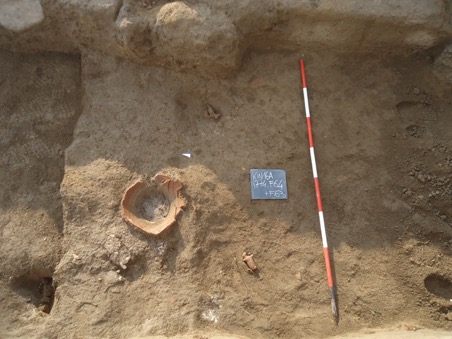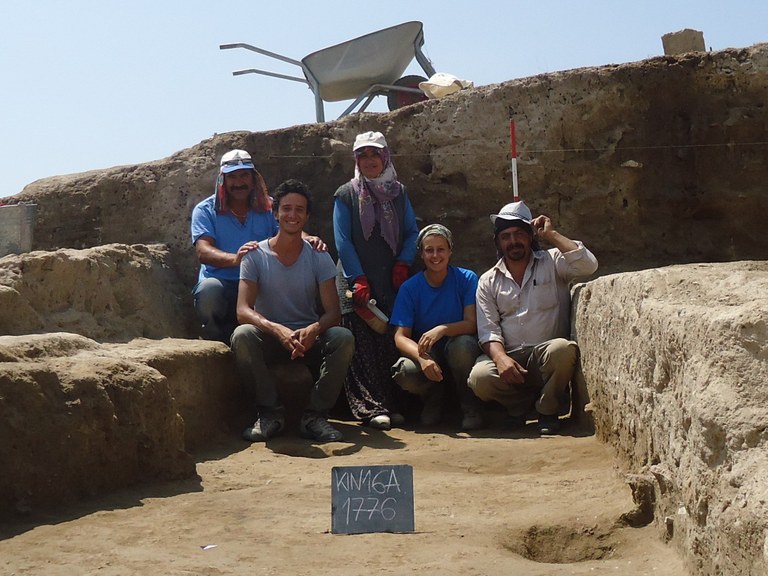A Religious Building at Kınık Höyük: New Finds from the 2016 Campaign
This year's excavation campaign at the site of Kınık Höyük (Central Anatolia, Turkey), led by Prof Lorenzo d'Alfonso, has achieved important results and collected new information on the Achemenid period at the site. In particular, remarkable finds have been unearthed in the four rooms of a well-preserved  building of this period excavated on the site citadel under the supervision of ISAW PhD student Andrea Trameri. In one of the rooms, a sounding of some early Achemenid phases (5th-4th C. BCE) revealed series of clay floors where relevant materials could be found in situ. Here, a collection of three fully preserved terracotta figurines of cattle and a statue of hawk carved in volcanic stone were found together.
building of this period excavated on the site citadel under the supervision of ISAW PhD student Andrea Trameri. In one of the rooms, a sounding of some early Achemenid phases (5th-4th C. BCE) revealed series of clay floors where relevant materials could be found in situ. Here, a collection of three fully preserved terracotta figurines of cattle and a statue of hawk carved in volcanic stone were found together.
In the coming years, it will be extremely interesting to investigate the largely unexcavated layers in this and the adjacent rooms. These finds are the best

The information on the ritual and religious sphere in the region and in this period are extremely rare or completely absent. The continuation of the excavation works, as well as the study of these material finds in their context are extremely promising.

